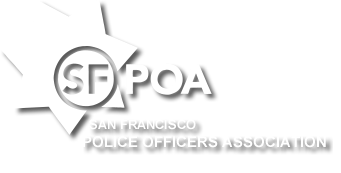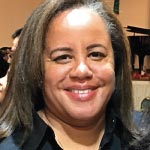In 1997 Lou Cannon, a journalist, non-fiction author, and biographer (he has authored five different works about President Reagan), wrote a book regarding the Rodney King riots in Los Angeles. The title was Official Negligence, and Mr. Cannon made a very strong argument that the true cause of that horrible break down of civil and peaceful life was exactly that: negligence on the part of numerous city officials. It is a book that should be read by all big city officials as a primer on how to avoid crucial mistakes. Killing the Messenger is a similar book. Perhaps not as polished but just as clear in its denunciations of specifically named individuals, it is a fascinating and educational piece of work.
The author, Thomas Peele, is an award-winning journalist who also lectures at The University of California, Berkeley. He knows his craft well and has a style that reads like an action-packed piece of fiction. Unfortunately, none of the story is fiction; only brutal facts.
Mr. Peele could have written solely about the murder of Chauncey Bailey and had plenty of readers engrossed. Instead, he has given us all a very handy and concise history of how the Black Muslim movement in America grew. In the early part of the 20th Century many African-Americans moved from the South to big Northern cities, especially Chicago and Detroit. Among those who re-located was an enormously convincing con man named W.D Fard who greatly influenced Elijah Muhammad, nee, Poole. Fard claimed to be God and Muhammad announced he was his messenger. They had what can only be described as a fantastic scenario of how the world would end. Muhammad was also an energetic racist, which was at the core of his teachings. "White devils" were the cause of all evil in his preaching. The idea was sold as Islamic, but the author states there is nothing that is shared between the many varieties of true Islam and the so-called Black Muslim movement. As the movement made its way to Oakland Yusuf Bey, a younger Black Muslim leader turned it into an even more clearly violent cult.
Yusuf Bey was a rapist, a bully and apparently very charismatic. Hiding behind an enterprise that was called "Your Black Muslim Bakery," the organization advertised themselves as a source for self-reliance and clean living. At the same time, Bey was bilking government agencies and ruling his kingdom with violence and fear. He raped whoever he wanted and had as many as 40 children. And yet, he was somehow given a wide berth by the Oakland Police and given what he wanted from a foolish group of Oakland politicians. It was his death due to cancer, and the murder of Anton, the son who had taken his place, that lead to Yusuf Aly Bey IV becoming at
age twenty, the leader of what Judge Thomas M. Reardon would refer to as "The Gang Who Couldn't Shoot Straight."
Mr. Peele tries as hard as any writer could to be balanced while dealing with any and all characters involved in this violent episode, and he succeeds in all respects. The victim, Chauncey Bailey, is described as a less than stellar investigative reporter, one who many times failed to document his statements, but was energetic and determined. He, too, had experience in Detroit, where Mr. Peele believes Mr. Bailey " had done his best work as a journalist for more than a decade." Mr. Bailey wanted to change racist thinking, but with words and courage, not violence. The Bey family was an easy target for Mr. Bailey. What he didn't realize was how serious of a target he was becoming for them. He had a story put together that would likely have embarrassed the government of Oakland and put pressure on police agencies to pursue the Bey gang. Bey IV called for Mr. Bailey's death. Following his murder there were two very different eulogies given for Mr. Bailey, one in Oakland by then-Mayor Ron Dellums and another, much more clearly important and cogent in Detroit by Bailey's former editor, Luther Keith, who remarked, "His death is an attack on what America stands for." He was taking note of the attack on the First Amendment with the murder of a reporter performing his duty. Bailey was the first reporter killed in the United States in pursuit of a domestic story since 1976. In Oakland Ron Dellums eulogized rather childishly, conjuring up the names of Batman and Captain Marvel. This adolescent appeal was coming from a person who was once known for his oratorical brilliance in Congress. But, as he often did as Mayor of Oakland, Dellums failed to act or understand the enormity of this murder.
Mayor Dellums' involvement with "Your Black Muslim Bakery" was peripheral and likely the result of his inattention to details. United States Representative Barbara Lee comes in for a bit of humiliation, as does the Alameda District Attorney Thomas Jefferson Orloff. So, to, did the Chief of the Oakland Police Department, Wayne Tucker, who had delayed for 48 hours a planned raid on the Bakery. The tactical team assigned to the raid insisted they were ready, but Chief Tucker insisted on waiting. Mr. Bailey was killed during that wait. And the homicide detective assigned to Mr. Bailey's case, Derwin Longmire, garnered an enormous amount of attention he certainly wished he could have avoided. Detective Longmire had courted a close relationship with the Bakery and the Beys. Many colleagues of Detective Longmire felt he had crossed over to the dark side, so to speak. He was a body-builder in the mid-1990s and believed Bey's "health food" might give him an advantage, or so goes the tale. Mr. Peele, as he does throughout the book, attempts to balance the story. He points out that criticisms of Detective Longmire should reflect that, "detectives never knew when they would need street intelligence to break cases and if Longmire left Bey with the impression... that he had some credibility - he might be able to call on him in a time of need." But Longmire's interrogation of Devaughndre ('Dre) Broussard, the man who shot Bailey three times at close range with a shotgun, was bizarre and troublesome and, to some extent, weakened the entire investigation. The Oakland Police Department is criticized frequently, but Mr. Peele has documented his observations.
The book, at approximately 470 pages, is filled with an examination of seemingly every facet of how a gang of thugs, hiding behind the idea of self-help and health food, was able to last for as long as it did. The author brings into the story the connection of this group to the Zebra Murders in San Francisco in the 1970s, and, unlike some other authors, includes in his text the mention of so-called Death Angels who were not arrested and are possibly wandering about today. There are several references to crimes committed in San Francisco, including the evening that the son of well-known politician Tony Hall was violently assaulted and robbed by the same young man, 'Dre Broussard who later murdered Mr. Bailey. There is a description of a tremendously violent assault at a San Francisco strip club, instigated by Yusuf Aly Bey, IV. There is also some seriously damning remarks about San Francisco lawyer LeRue Grim, who eventually became Broussard's lawyer. A short sampling is, "To call attorney LeRue James Grim a bottom-feeder would imply that he inhabited the bottom of the legal system. It would also insult all the solo practitioners who troll courthouse hallways for teary-eyed grandmothers ... LeRue Grim, once described by a judge as possessing 'absolute blindness to conflicts of interest and professional ethics,' inhabited a place far beneath the world of even the most unscrupulous criminal lawyers." I'm happy and proud to write that my wife Laura arrested Mr. Grim for drunk driving several years ago.
Bey IV is referred to throughout the book by the name Fourth, which became slightly confusing at times. Because there were so many different Beys mentioned, it demands that the reader refer back in the book occasionally to be sure one understands who is being discussed. But any effort expended is worth the readers' energy and time. This book has value on many levels. It provides the reader with a history and insight into the fraudulent schemes of Black Muslim groups, it shows how negligence at high levels of government can bring about near anarchy and, how power corrupts people at every economic and social level. The San Francisco Chronicle, in a Feb. 26, 2012, review, called this book an "urgent" read. Mr. Peele has done such a fine job of writing and organizing the story that it reminded me of "Under the Banner of Heaven" by John Krakauer, another story of the acidic mixture of faux religion, sex and violence, all hiding behind a flag of benevolence.

